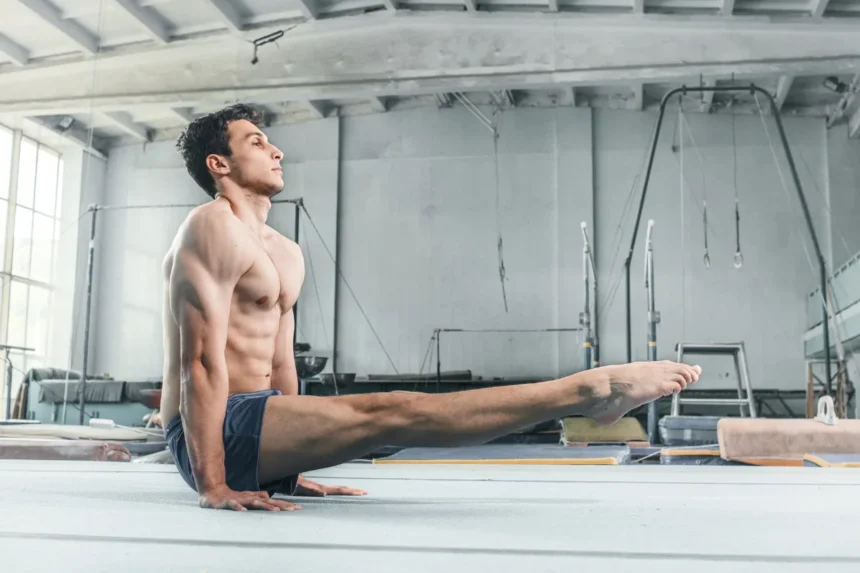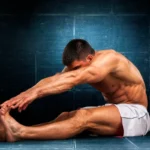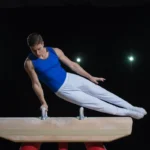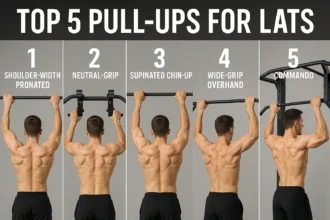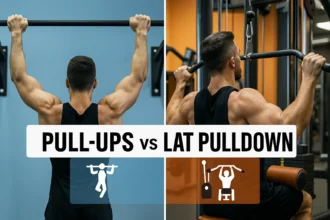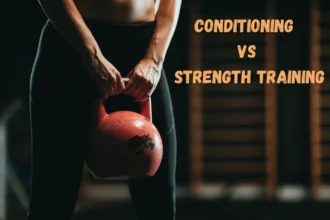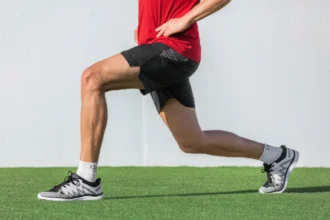When you think of incredibly muscular athletes, bodybuilders or powerlifters may come to mind. But gymnasts? They spend most of their training hours perfecting their skills rather than lifting weights, yet their physiques are often among the most impressive in the sports world. So, what’s their secret?
While traditional strength training relies on weights and resistance machines, gymnasts develop their muscularity primarily through bodyweight training, emphasizing movement control, tension, and transitions.
The Key to Gymnasts’ Strength: Transitions Under Load
It’s not just about static holds or basic movements. Gymnasts train in a way that demands full-body control under high levels of tension. Their strength comes from their ability to transition between movements while maintaining that tension. This concept, sometimes referred to as “dynamic isometrics,” is a game changer in muscle development.
For example, imagine moving from an L-sit to a pull-up, then shifting the legs from side to side while maintaining control. This is vastly different from performing an isolated exercise like a basic pull-up or an L-sit hold. The combination of movements demands stability, endurance, and engagement of multiple muscle groups simultaneously.
Muscle-Building Factors in Gymnastics Training
Gymnasts’ muscularity isn’t built by accident. Their training incorporates several key elements that contribute to significant muscle growth:
1. Time Under Tension (TUT)
Muscle growth is largely influenced by how long a muscle is under tension during an exercise. Gymnasts frequently hold positions and slowly transition between them, maximizing the duration their muscles are engaged. This sustained stress encourages hypertrophy (muscle growth) in a way that quick, explosive movements don’t.
Additionally, TUT forces muscles to work harder for longer periods, leading to greater fatigue and adaptation. In gymnastics, movements such as planches, front levers, and Maltese holds require muscles to remain engaged for extended durations, which leads to increased muscle fiber recruitment and ultimately, more muscle mass.
2. Eccentric Overload
Eccentric training (the lowering phase of an exercise) is known for promoting muscle growth and strength. Gymnasts experience eccentric overload constantly—whether it’s lowering themselves from rings, controlling landings, or transitioning between holds. The slow, controlled descent in many gymnastics movements increases muscle activation and promotes greater gains.
For instance, in movements like the negative muscle-up or slow-ring dips, the eccentric phase forces the muscles to resist gravity while lengthening under load. This leads to microtears in the muscle fibers, which, when repaired, result in stronger and larger muscles. Gymnasts also perform controlled dismounts and landings, further emphasizing eccentric control that builds resilience and power.
3. Isometric Strength
Holding a position under tension (such as an iron cross on rings or an L-sit on parallel bars) builds isometric strength. While isometric exercises alone may not cause major hypertrophy, they contribute significantly when combined with transitions. This is why static holds in gymnastics are much more effective than, say, pressing your hands together in front of your chest.
Isometric strength is crucial in gymnastics because many skills, such as the planche, back lever, and Victorian cross, require muscles to remain contracted without shortening or lengthening. This sustained contraction increases muscular endurance and strengthens the stabilizing muscles, which enhances overall power and muscle size.
4. Full-Body Engagement & Energy Leak Prevention
Gymnastics movements require a high level of core control. Unlike isolated exercises in a gym, where stabilizers might not be fully engaged, gymnasts must recruit every muscle to maintain balance and prevent energy leaks. This full-body coordination strengthens muscles holistically and makes their training far more efficient.
For example, a simple L-sit requires coordination between the core, hip flexors, and upper body to maintain stability. A movement like the back lever engages the entire posterior chain, demanding strength from the lats, glutes, lower back, and hamstrings simultaneously.
By eliminating energy leaks—weak points in the kinetic chain—gymnasts develop unmatched efficiency and muscular endurance, making their training more productive than traditional weightlifting.
Real-Life Examples: Gymnastics Strength in Action
To better understand how gymnasts develop such muscular physiques, let’s look at two real-world examples of bodyweight transitions used in training:
Lever Raise → L-Sit Pull-Up → L-Sit Swivels
This advanced movement sequence involves moving from a lever raise into an L-sit pull-up, followed by controlled swiveling of the legs from left to right.
Instead of doing these exercises separately, combining them forces the body to maintain tension throughout, recruiting the core, lats, biceps, and stabilizing muscles all at once.
Dip + “Plus” → Gymnast Ab Tuck
This transition combines a dip (for pushing strength) with an advanced core movement. After dipping, the gymnast engages their serratus anterior and shoulders by pressing into a “plus” position, then transitions into an ab tuck by pulling the pelvis up using only the core.
This exercise works the chest, shoulders, triceps, and core in a single sequence, making it an incredibly efficient muscle-building movement.
These kinds of combination movements add layers of complexity and require controlling your entire body under load—perfect for building the kind of balanced, dense muscle gymnasts are known for.
How to Incorporate Gymnast Training Principles Into Your Workouts
If you’re interested in developing similar strength and muscularity, you can start incorporating transitional bodyweight movements into your training. Here’s a simple progression:
- Master the Dip Plus: Get into a dip position and engage your shoulders by pressing down and away. Hold this position and focus on activating your chest and stabilizing muscles.
- Introduce Movement Under Tension: While holding the dip plus, try small forward and backward weight shifts to feel how your muscles respond.
- Apply It to Pull-Ups: Instead of just pulling up and down, try maintaining tension throughout the movement, keeping your core tight and controlling your descent slowly.
Gradually adding these elements, and you’ll start to experience how gymnasts build strength without traditional weights.
Final Thoughts
Gymnasts’ impressive physiques aren’t just the result of genetics or sheer repetition—they stem from smart, structured bodyweight training that emphasizes time under tension, controlled movement transitions, and full-body engagement.
If you’re looking to build serious strength and muscle without a gym, incorporating elements of gymnast-style training can be a powerful tool. Start small, focus on control, and gradually progress to more complex transitions. Before long, you’ll be building strength like a gymnast—no weights required.


